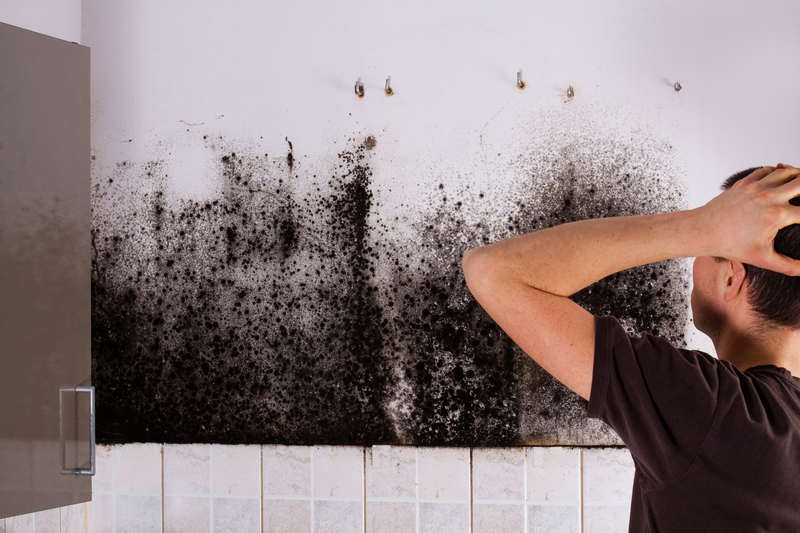Noticed mould growing on your walls and thought about reaching for the bleach or vinegar? Well, don’t as they will not kill mould.
Read our helpful hints and tips on how to kill and get rid of mould effectively.

What is mould?
Let’s get to the root cause of the problem. Mould spores are normally inert in the substrates of buildings and only grow when in contact with excessive moisture in the air that is caused by day-to-day activities, such as cooking, showering and drying wet clothes. This is often exacerbated by cold surfaces and environments. When the moisture gets trapped from poor ventilation, condensation forms on cold surfaces, which can result in droplets forming on exterior walls and ceilings.
Moisture which is held in the atmosphere and forms condensation is not pure water. It contains fats and greases from cooking, washing, bathing etc and general household dirt which both waters and feeds the mould spores.
How to prevent condensation
To prevent mould growing or forming, you can take some simple steps to prevent condensation forming:
Keep inside temperature consistent
- Wipe cold surfaces
- Open windows when warm outside
- Close kitchen and bathroom doors
- Try not to dry clothes inside
- Maintain and use extractor fans
- Add insulation
If you’ve tried all the above and still noticed condensation forming, dehumidifiers could be the solution. Dehumidifiers help to control moisture in the air, which can stop further growth of mould. Take a look at our dehumidifier range here.
However, if you already have mould, you’ll need to treat it and treat it soon.
How to kill mould
Once you’ve found the source of the condensation which is normally a lack of ventilation or poor insulation and/or heating and addressed the problem you can start to kill the mould. You should only use treatments that are approved by the Health and Safety Executive for killing mould and carry an HSE registration number. You should be wearing protective equipment, such as goggles, gloves and a mask for the nose and mouth, to protect yourself from mould spores.
To get rid of mould you should:
Take a look at our Mould Eradication Kit and Treatment range here.
- Wear personal protective equipment.
- Make up in a bucket the Biocidal Detergent solution as directed and wash the surfaces with a sponge or cloth to remove mould.
- Extend the treatment one metre beyond all visible signs.
- If the affected areas are papered wash with the solution, strip the wallpaper and then wash down the wall surfaces again.
- Make up the penetrating barrier material as directed and apply by brush.
- Again extending the treatment one metre beyond all visible signs.
- When the surfaces are dry add the fungicidal additives to your paint or wallpaper and redecorate as normal.
When to get a professional to remove mould
If the mould covers a large area or is caused by contaminated water, you should contact us to seek professional advice.
We have over 50 years experience treating mould. Our mould eradication kits are approved and registered by the HSE under COPR for amateur use. Sempatap Thermal has been tested and accredited by the NPL and BRE and over the past 25 years of use in the UK it has been proven to be effective. Both materials are quick and easy to use and install to not only treat mould but provide immediate warmth and comfort whilst lowering your fuel bills.
Now you know how to kill mould and prevent it from forming, enabling you to live in the comfort of knowing your house no longer has mould, contact the sales office today.
